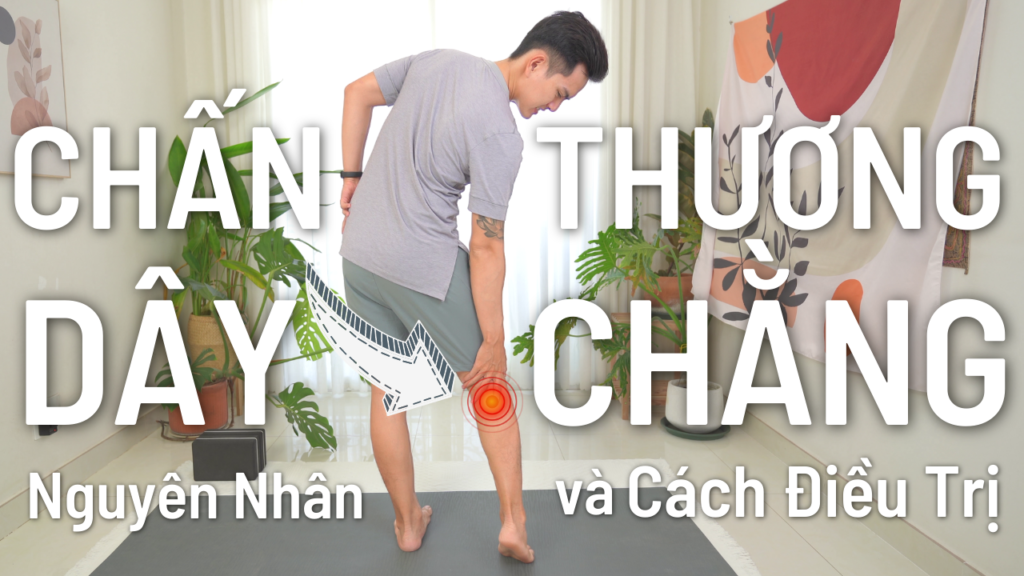Knee ligament injury It is a common condition not only for athletes but also for those who are normally active. It is also possible to injure ligaments. To learn the causes and ways to treat and prevent, follow the article below with Nguyen!
What is a ligament injury?

A ligament is a flexible, fibrous band of connective tissue that connects two bones or cartilage or holds a joint together. When overstretched, the ligament can tear.
One of the joints most commonly affected by a ligament tear is the knee. And there are three types of ligaments around the knee that can be injured:
Anterior cruciate ligament is one of the major stabilizing ligaments in the knee. It has a sturdy rope-like structure located in the center of the knee, running from the femur to the tibia. When this ligament is unfortunately damaged or torn, it is difficult to heal and often leads to pain in the knee.
Posterior cruciate ligament Located at the back of the knee, is another ligament that connects the femur to the tibia. The job of the posterior cruciate ligament is to keep the tibia from moving too far back.
The lateral ligaments are located on either side of the knee – the internal ligament, which connects the femur to the tibia while the lateral ligament connects the femur to the fibula. These ligaments control the lateral movement of the knee joint.
Causes of ligament damage
Ligament injuries can be caused by twisting or being subjected to sudden, overwhelming pressure. This is especially the case when the ligaments around the joint are fully stretched, causing them to become damaged or separate from the bone.
This condition occurs most commonly during sports that use the joints in the legs a lot, especially those that change direction suddenly, reduce speed when running such as football, jogging, climbing.
Ligament injuries can also occur during exercise Flexible yoga overuse, improperly causing ligaments to tear or overstretch. Besides in some cases like landing from an incorrect jump. Or a direct blow to the side of your knee also leads to a ligament injury.
How to diagnose a ligament injury?
If you experience severe swelling, swelling, or pain after an accident, it could also be a symptom of ligament damage. For an accurate diagnosis, visit a medical facility for a physical examination of the knee and imaging tests such as X-rays (to rule out fractures), magnetic resonance imaging, and arthroscopy.
Ways improve cord damage effective ligature
Non-surgical ligament damage treatments may include special exercises, anti-inflammatory medications, and the RICE method.
Rest - rest
After a ligament injury, the first thing to do is rest. And avoid too much movement, as that will make the area worse and more painful.
Ice – cold compress
If the ligament is stretched too much, it can lead to ligament damage. Applying ice will help the ligaments become normal and less swollen. Between 48-72 hours after the injury, you need to apply ice as soon as possible. Each cold compress should last about 15-20 minutes. The rest time between sessions is about 120-180 minutes. During the first 24 hours after a ligament injury, it needs to be done regularly, with a break of about 30-60 minutes.
Compression – Compression bandages
Use a cloth or elastic bandage to cover the injured area. But absolutely do not squeeze too tightly because it will be difficult for blood circulation.
Elevation – Elevate the injury site
Elevate your legs to relax the injured area and improve blood circulation. Especially when you go to bed or lie down to rest.
Surgical treatment: If conservative treatments are not effective, there are many surgical options. Reconstructive surgery is a commonly performed procedure and can often be performed through arthroscopy, minimizing incisions and complication rates.
If left untreated, ligament damage can be severely disabling, leading to more pain and immobility. Recovery time depends on the type of injury and the treatment path chosen.
Prevention of ligament damage
Take care while playing sports properly, do not overexert yourself to reduce the risk of ligament injury. In addition, regularly practice sports that help stretch ligaments such as:
- Homeworks Flexible yoga.
- Exercises to strengthen the leg muscles.
- Exercises to strengthen the flexibility of the hips and pelvis.
- Practice jumping and bearing the weight of your knees when you land.
3 yoga moves to recover ligament injuries
1. Yoga Pose with Knees

- Legs shoulder width apart.
- Inhale, bring your right leg up.
- Exhale, gently lower.
- Do the same with the left side.
- Repeat this movement 10 times (5 times on each side).
2. Yoga posture lying on the stomach with legs raised


- Lie face down close to the ground, hands are interlaced (face down). Or keep your arms at your sides and straighten your legs.
- Inhale, lift right leg (do not bend knee).
- Exhale, gently lower your legs.
- Repeat 10 times (5 times on each side).
- Last hold for 5 breaths, breathing evenly.
3. Bridge Yoga Pose


- Lie down on the ground, hands on hips and knees bent.
- Inhale, squeeze your buttocks, push your hips up, hold for a bit, then exhale gently lowering your hips.
- Bridge pose will help strengthen your glutes and help you practice better control of your hip joints, avoiding back sagging and back pain.
Nguyen hopes this article will help you improve your ligament damage. Please follow and wait with Nguyen the posts about health and next Yoga!
References
Knee Ligament Injuries: Causes, Symptoms & TreatmentLigament Injuries to the Knee – Johns Hopkins Medicine



